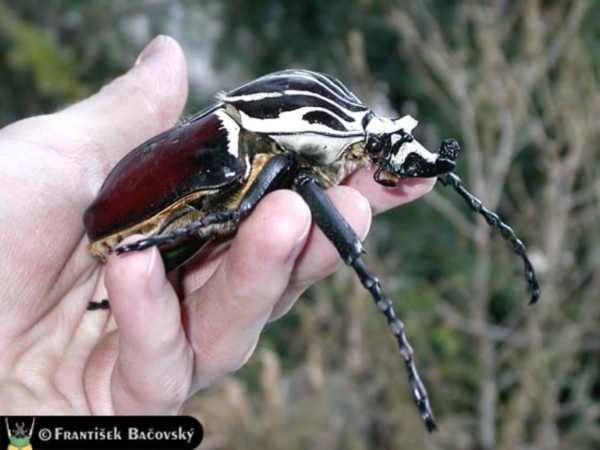
Goliath beetles (Goliathus albosignatus)
The bulky bodies of Goliath beetles are composed of a thick chitinous exoskeleton, which protects their organs and hindwings. Like most beetles, they possess reinforced forewings (called elytra) that act as protective covers for their hindwings and abdomen. Only the hindwings (which are large and membranous) are actually used for flying. When not in use, they are kept completely folded beneath the elytra. Each of the beetle's legs ends in a pair of sharp claws, which provide a strong grip useful for climbing on tree trunks and branches. Males have a Y-shaped horn on the head, which is used as a pry bar in battles with other males over feeding sites or mates. Females lack horns and instead have a wedge-shaped head that assists in burrowing when they lay eggs. In addition to their massive size, Goliath beetles are strikingly patterned; prominent markings common to all of the Goliathus species are the sharply contrasting black vertical stripes on the pronotum (thoracic shield), while the various species may be most reliably distinguished based on their distinctive mix of elytral colors and patterns.[1]
Advertisements
13 December 2022
Advertisements



